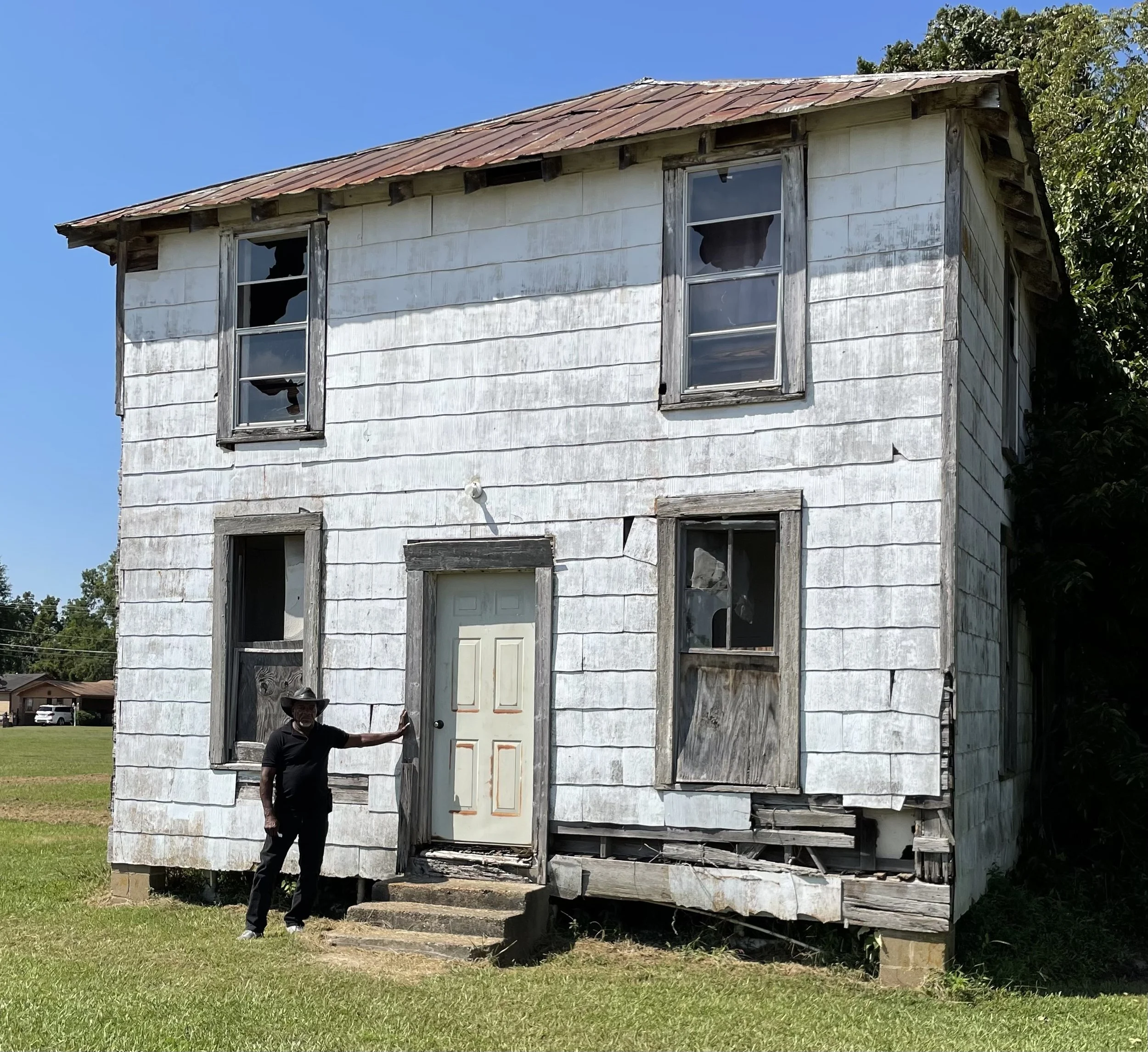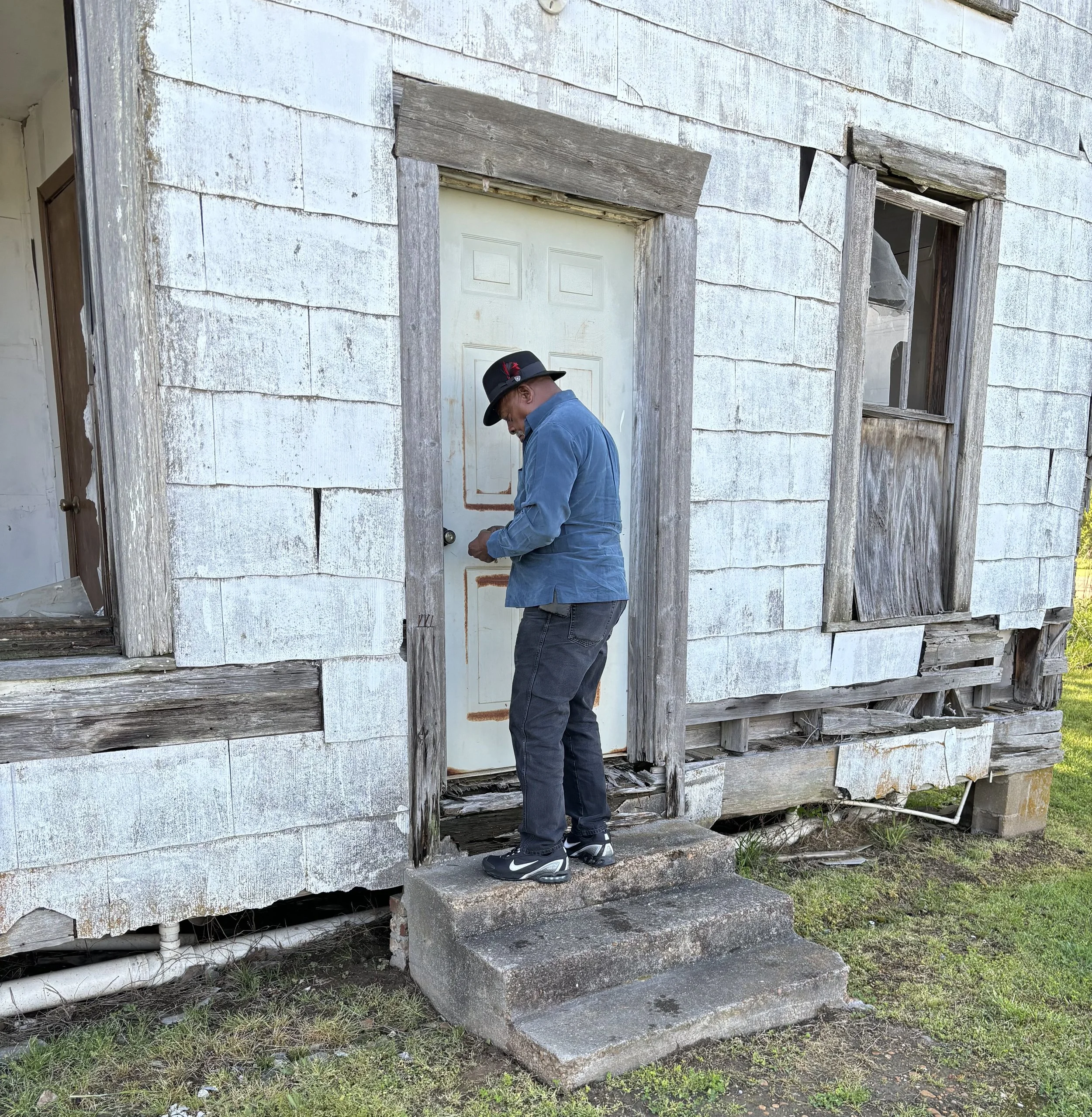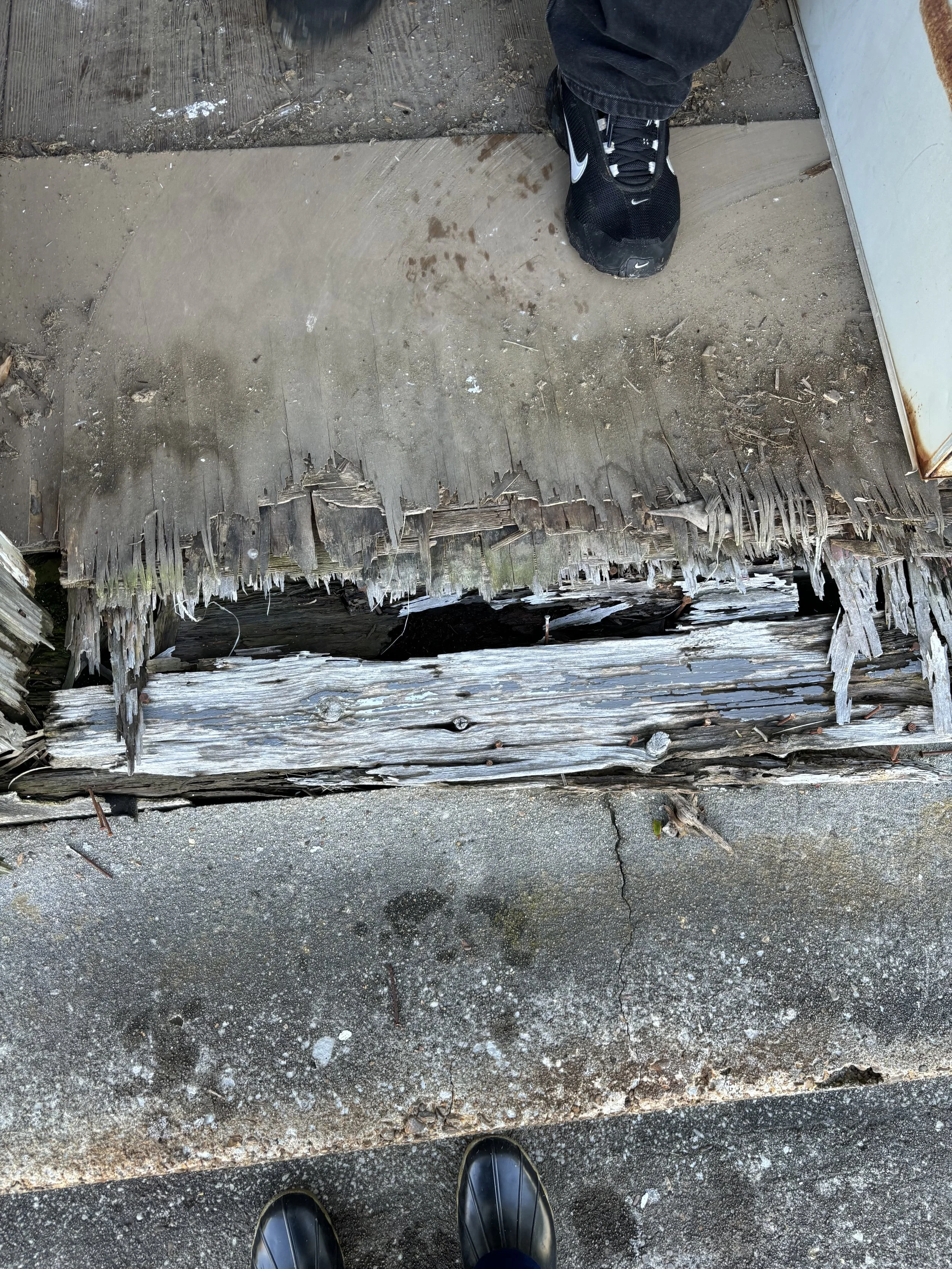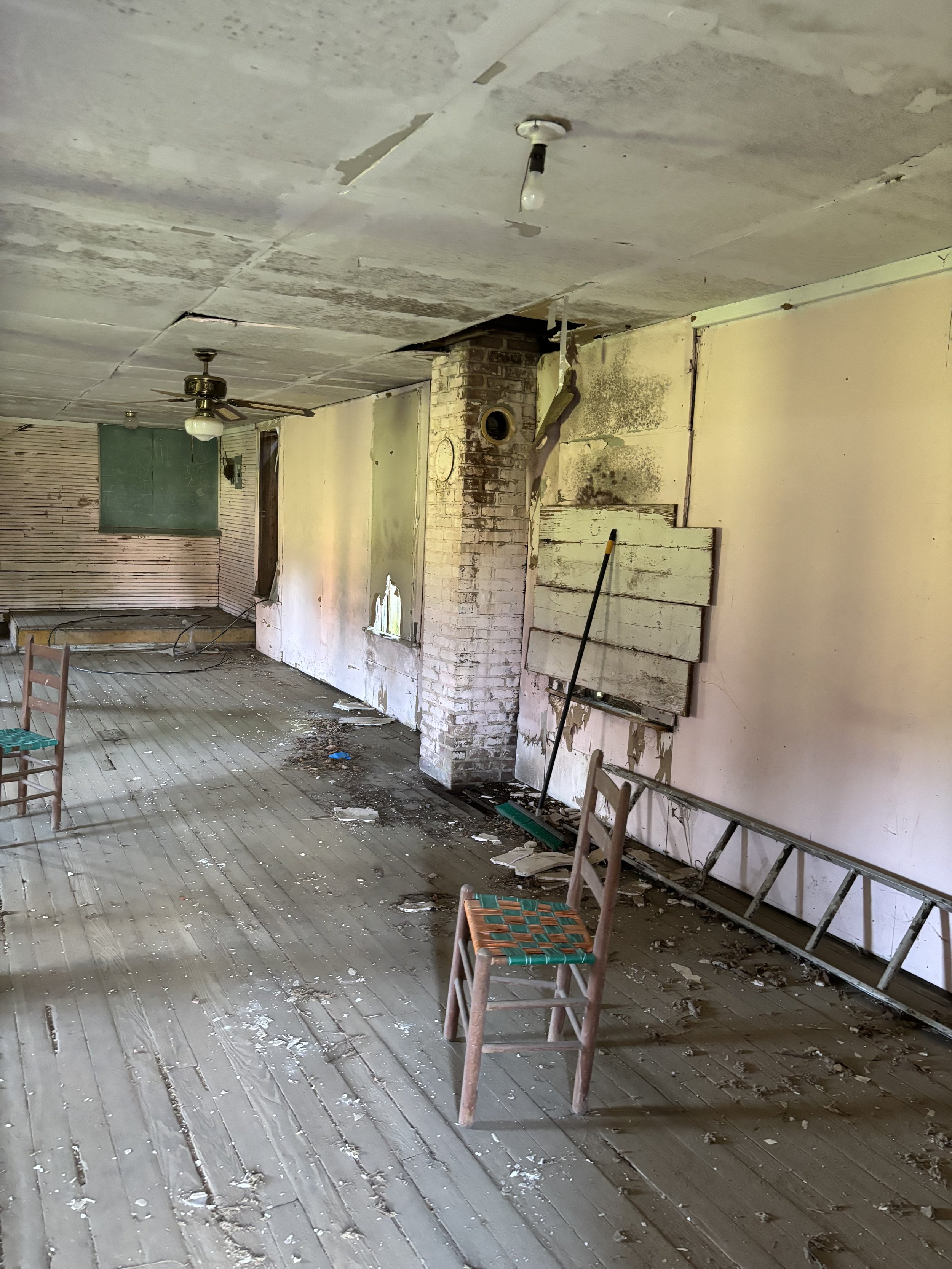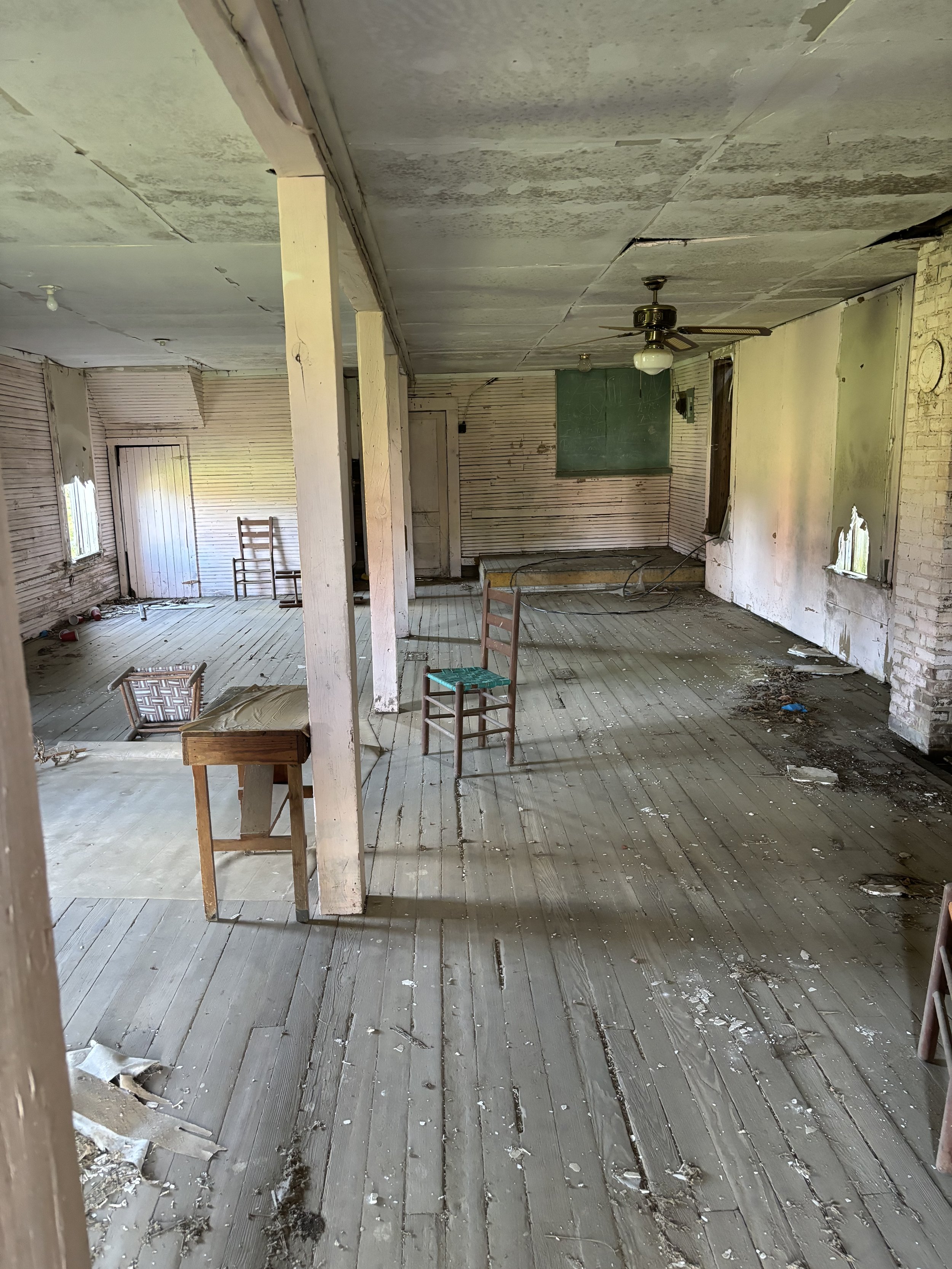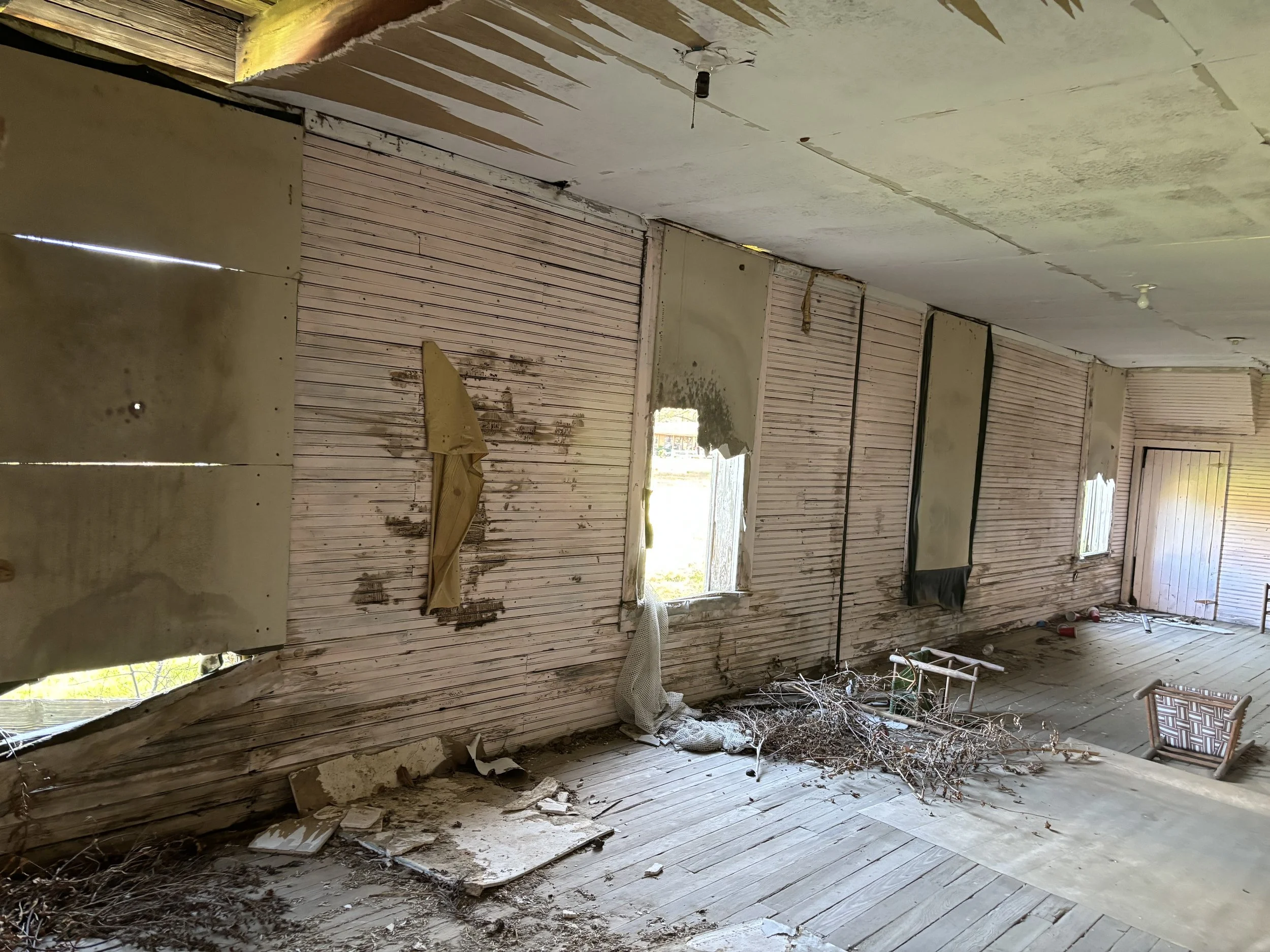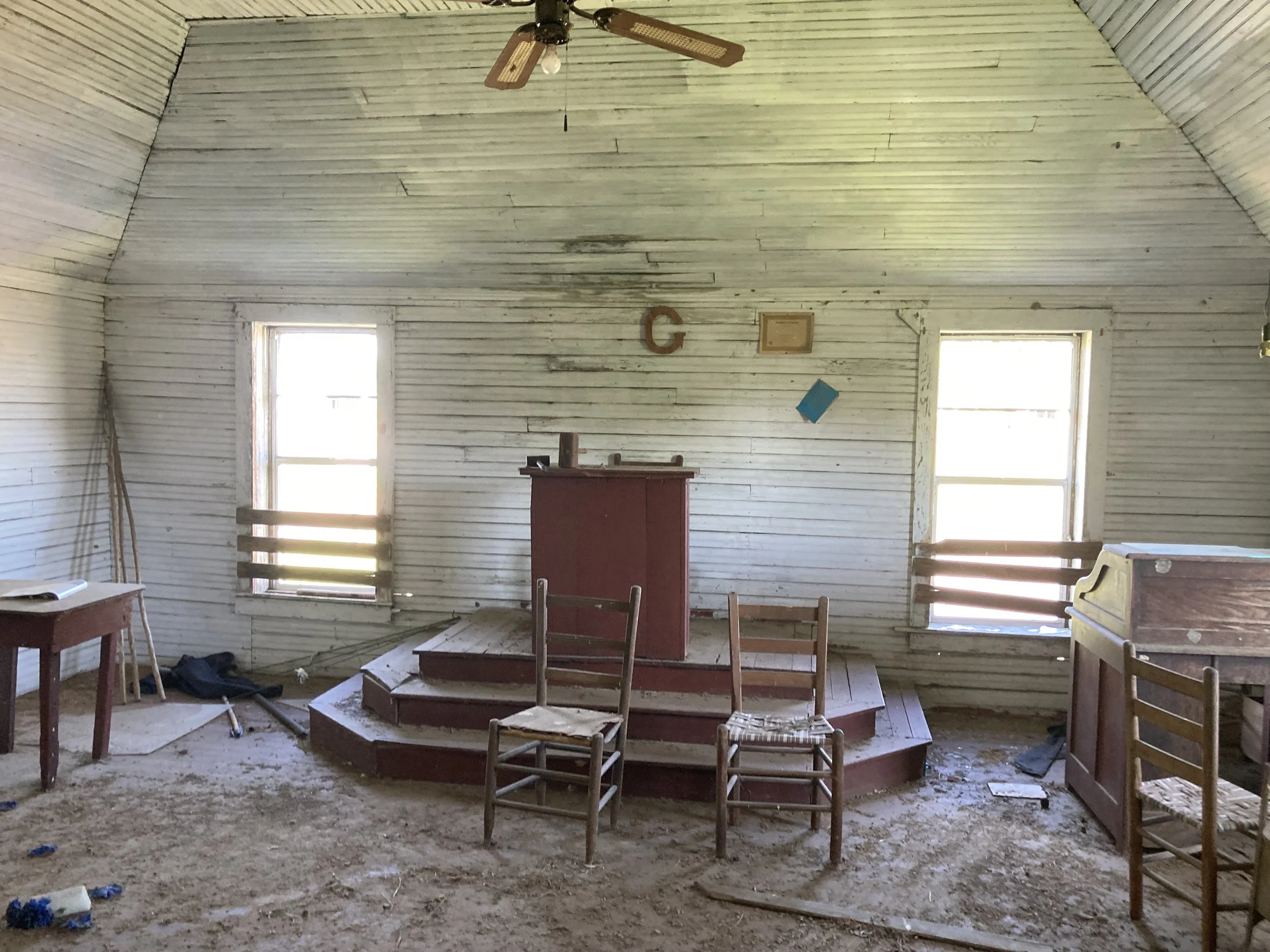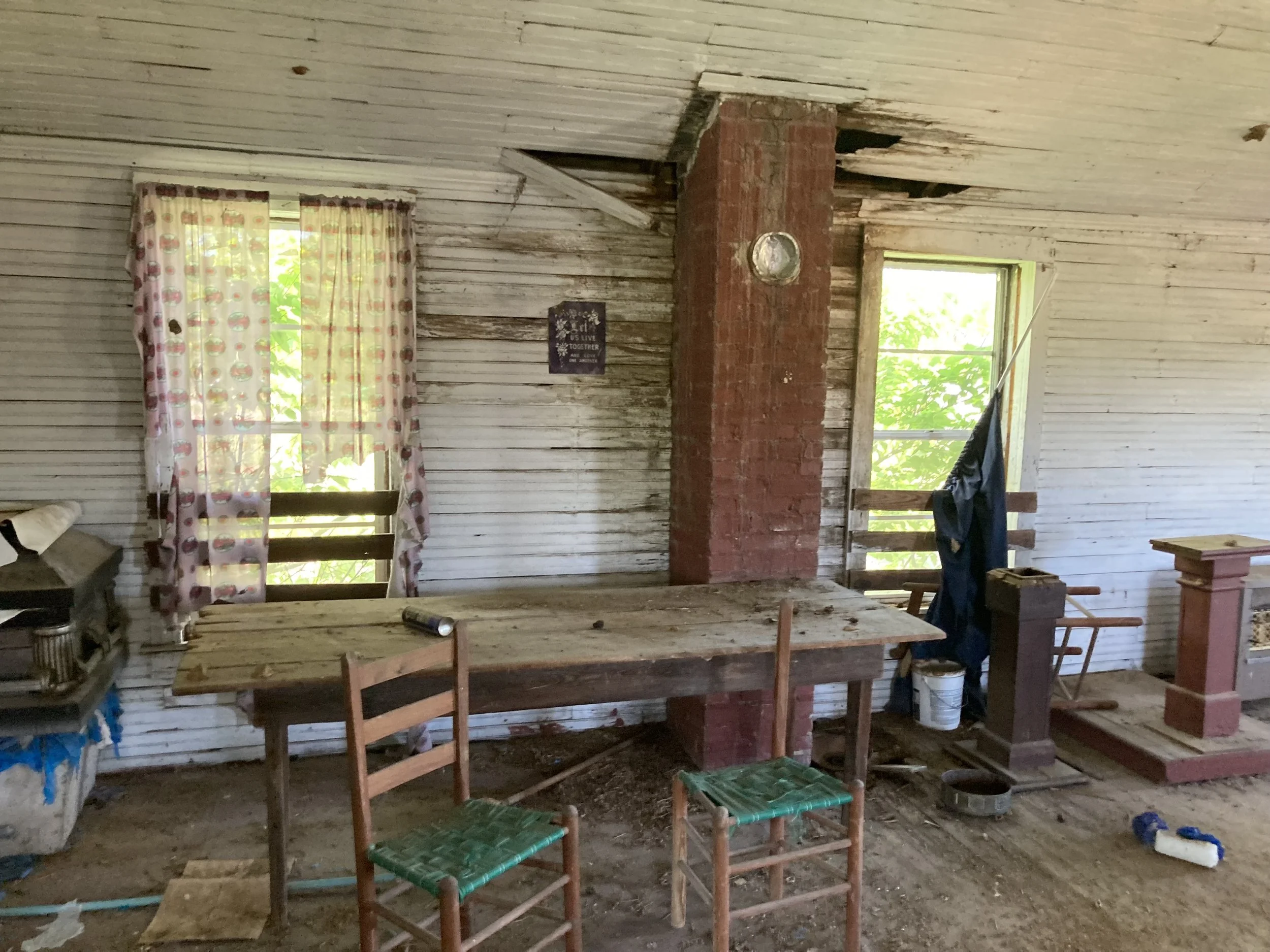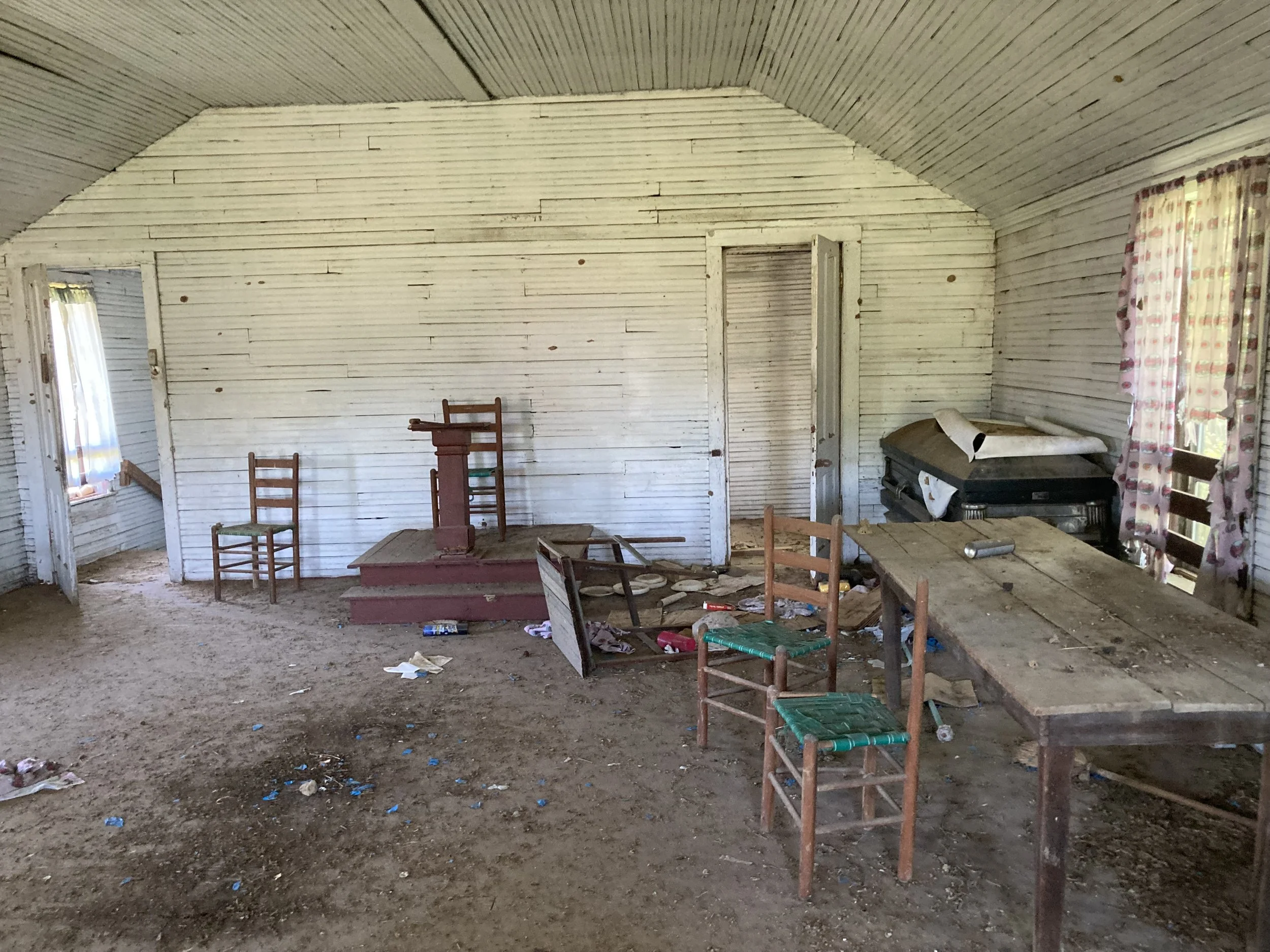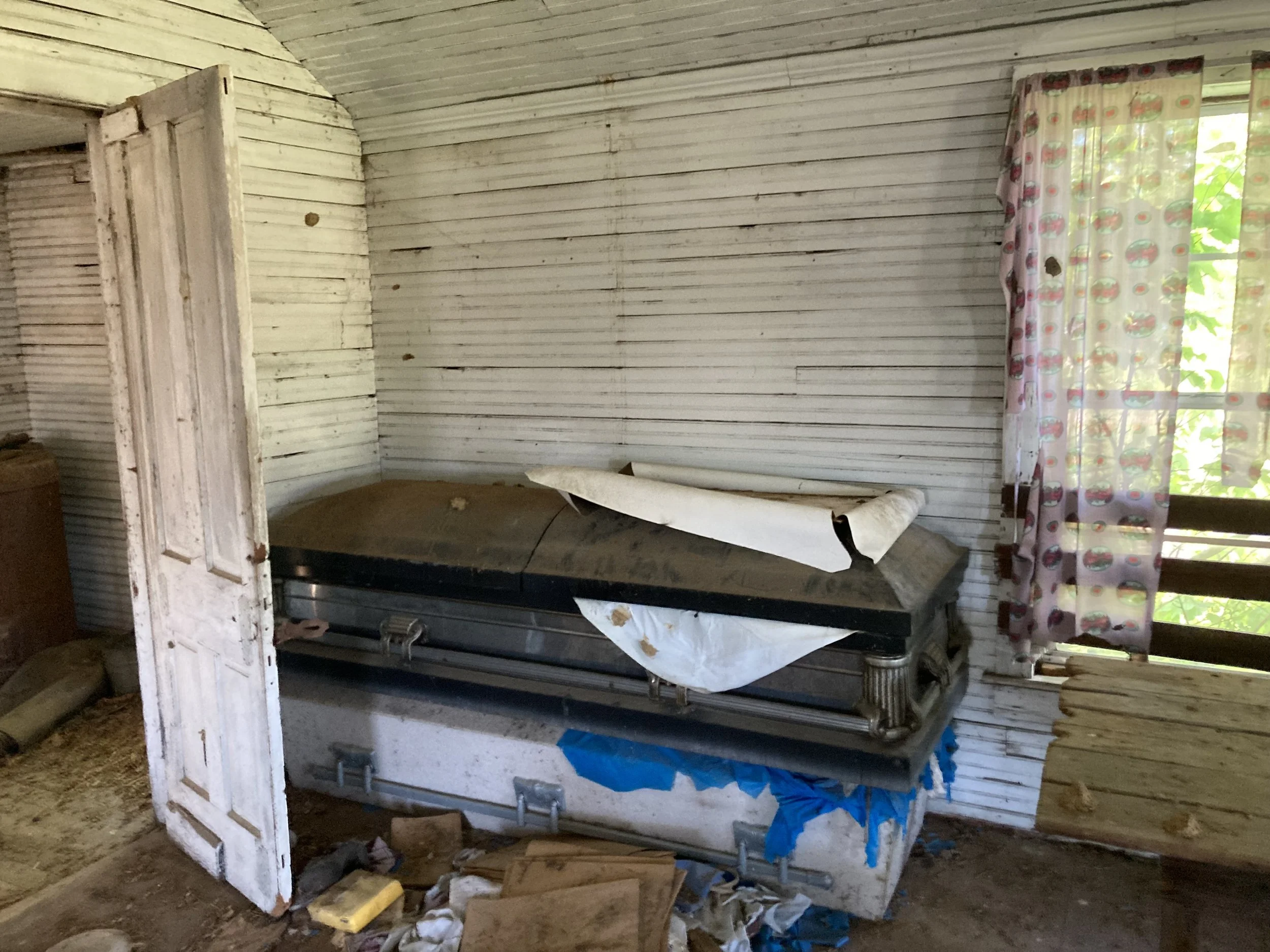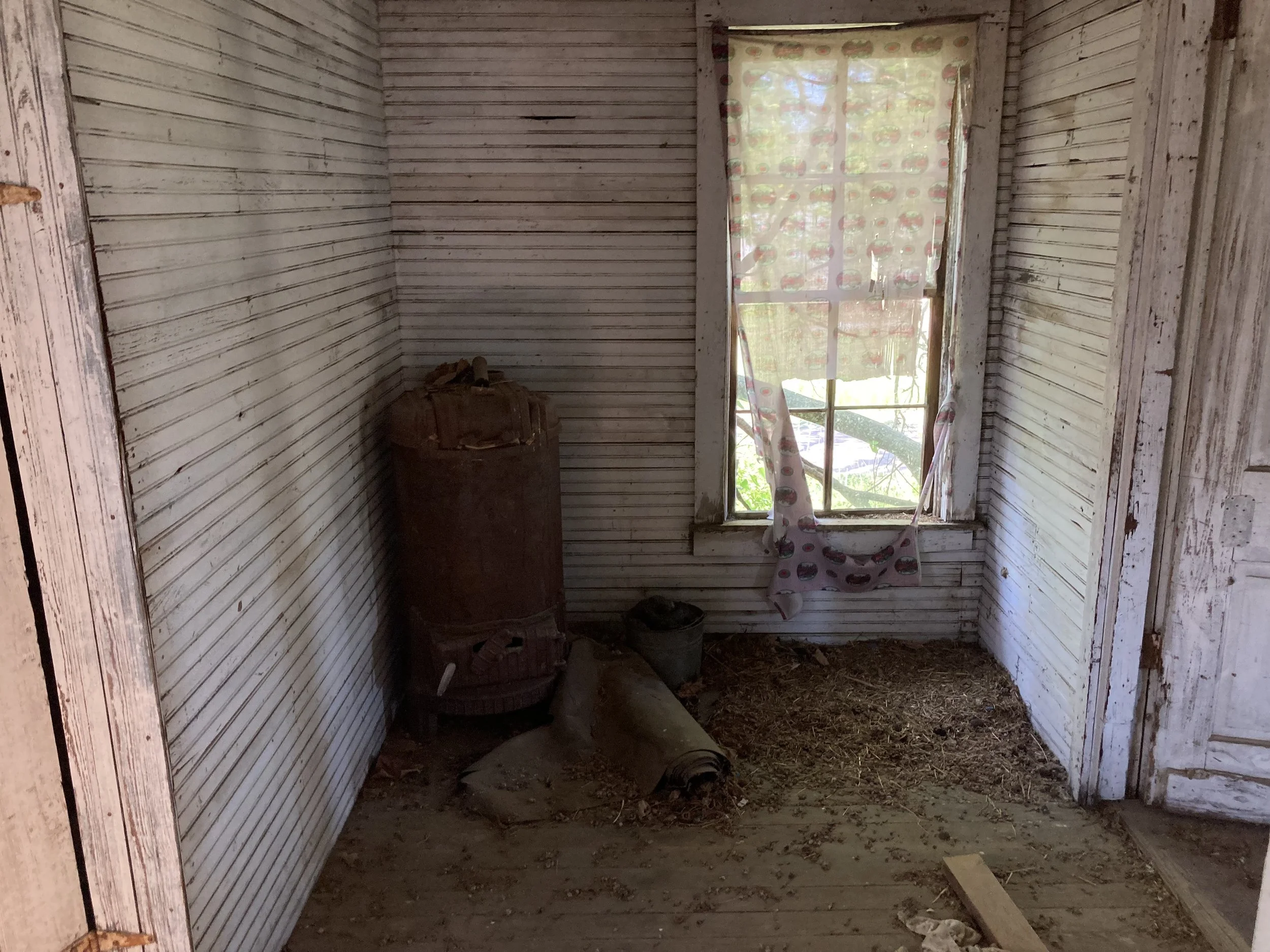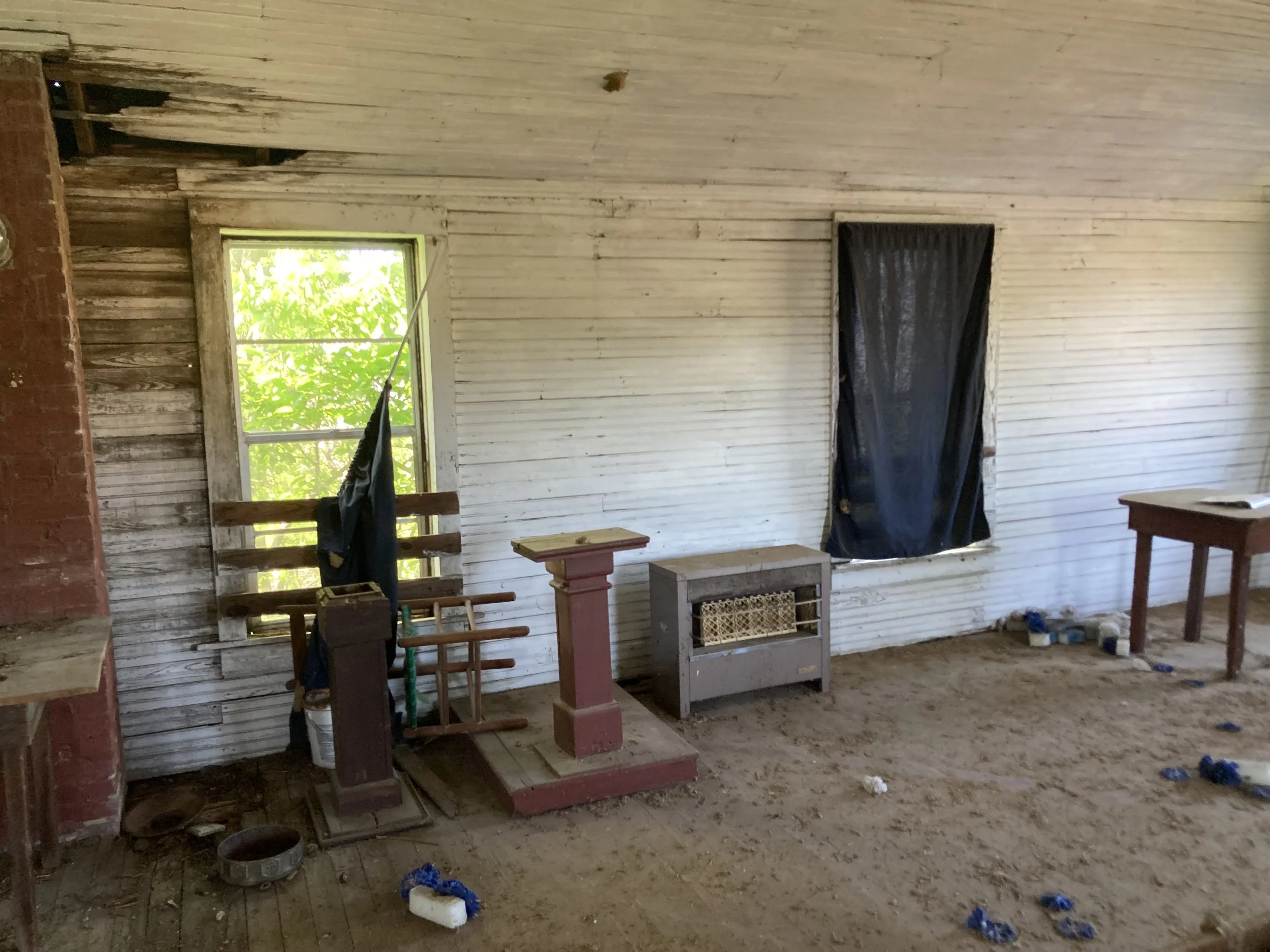Como 2024: The Old School
Our original destination on this trip was Memphis, Tennessee, where we caught up with AC and his wife. We made plans to travel to Como, Mississippi, AC’s hometown, on a fact-finding mission. We hoped to make some important connections and move towards saving an important piece of AC’s history, as well as the history of the town he grew up in.
Here he was born and raised in a small sharecropper’s cabin, by his mother and grandmother. These two strong women raised AC, his two sisters and their cousins. His family came out of slavery, only to be stuck for generations in the dead-end sharecropping system; a new type of slavery which locked them into a life of backbreaking work. AC began picking cotton at the age of four.
At age six, he began school in a temporary location, as the “colored” school had burned down just two years previously. Though the information of the white school and community during that era is vast, there is little written information and no photos from the “other side of the tracks,” so the story of the “colored” people of Como is silently being erased.
Photo of AC at the entrance of his primary school (taken in 2022 by Dayna Ault).
We located AC’s school building on our last trip, and had hoped to raise some interest in getting it rehabilitated and preserved as a historical landmark. However, I was having difficulty locating someone who would talk with me about the project. I eventually turned it over to AC’s wife, hoping she would have more luck than me.
In the meantime, we made plans to go before the City Council, in hopes of not only garnering support, but we also hoped to make connections with individuals who would get on board with the project, and might have some knowledge of the history of the town.
That night, AC spoke about his memories of attending primary school in the building and of the need to save the building for future generations.
When it was my turn, I spoke about the book I’m writing, which will include some history of Como. I gave them ideas of how they might use the school building, once rehabbed, to bring in revenue, as we have done with our old grist mill in my town. The board and those in the audience responded positively to our suggestions, giving their consent for us to move forward.
For the history geeks…
History of the School
In 1950, the colored school burned down, leaving the children without a school building. The administrators found four locations to accommodate the school children until they erected a new school. Included were three churches and the masonic lodge. This temporary solution continued until they completed the new elementary building in 1963.
AC’s school was held in the masonic lodge (colored). The building had a lower floor which was intended for sewing circles and other community and member meetings. The upper floor was “sacred,” used only for masonic meetings.
The masons continued to use it as a lodge into the 1970s. In the 1960s, during the Civil Rights era, when the Black citizens were fighting for the right to vote, the lower floor, (previously used as a school), became a meeting venue for the Voters’ League. What a history!
Just before I left Missouri, AC’s wife got us connected with the president of the Como Historical Preservation Commission (CHPC). President, Meg Bartlett, was very interested in the project, and made plans to connect when I was in the area, mentioning that she might be able to get access to see the interior of the building.
We made plans to meet on Thursday with an impromptu meeting of the CHPC to discuss the project. Three CHPC ladies, AC and I talked about how to get more information about the history of the building and suggestions for its eventual use. The meeting was full of informative information (good thing I recorded it!) We were able to speak on the phone with several knowledgeable individuals, including one of Como’s most well-known previous citizens, Otis Sanford (see more info below.)
The looming question of the day, was critical to the grant process: They needed to find record of the exact year the building was erected. With that information, they would be able to move forward with the historical landmark and grant request.
Someone asked if there was a cornerstone. Apparently there had been one, but it was removed for repair a few years prior. The man who was going to do the repairs had died. No one knows what became of the stone, as it was never recovered. (I love a mystery. One of the CHPC members is now trying to hunt down the missing cornerstone.)
Exploring the School
After our meeting, we drove to the old school/lodge to assess its condition. It made me sad to see the outside had deteriorated considerably since our last visit. I was concerned, as the condition of the building could affect the ability to qualify for a grant.
It was quite a task getting into the building, because the key had been lost, and we had nothing to unlock that door.
The key was lost, so AC tried every key on his ring, to get into the old school. (photo by Dayna Ault)
While we were all mourning the lack of a key, AC was busy diving through one of the broken windows. Someone yelled, “He's going in!” I came around the corner just in time to see his feet swimming through the opening. (Sorry - I wasn’t quick enough to snap a photo.)
The thought of a group of senior citizens breaking into a building, and the visual of 78-year-old AC diving through a broken window had us all laughing. It certainly lightened the tension of the “will we get in” moments.
We thought it would be easy once he got inside, but the rusted door knob was especially problematic. After sometime, however, with AC working from the inside and my husband tugging from the outside, they finally got the door knob removed. We whooped and cheered, as the door swung open!
Stepping wide to avoid the rotted boards at the entry, we went in to purvey the interior of the building. The rest of the wood floor, though littered with dirt and debris, was surprisingly solid, only showing damage near the chimney, and in front of broken windows.
The interior walls were covered in beadboard paneling, as were the interior doors. I’ve looked up a bit of info on when that style of paneling was used. It seems it was from the Victorian era (1880s) to 1930s. A clue in our search for a date, but still not definitive. We estimate that the building has been standing empty for approximately 50 years.
Below is what we found inside:
Behind one door we found the stairs, but I wasn’t brave enough to try them. After I let myself out of the very lower floor, my husband, and AC went up the stairs, which they said were “so solid they didn’t even creak.”
Since it had been pouring rain for several days, it was a good day to check for any leaks. Thankfully, the old metal roof is holding out most of the rain and the second floor is as solid as the first. They also found a potbellied stove and two coffins on the upper level. We found that to be quite interesting, after learning that Otis Sanford, previous student at the school, states in a 1982 article in The Commercial Appeal, that he was told by a classmate, that the building was haunted. (More on Otis Sanford at end of blog.)
They also found logbooks on the second floor. The CHPC ladies report that the log books go back to 1941. (The clues are stacking up!)
Check out these photos from the second floor of the old masonic lodge (taken by Meg Bartlett, President of the CHPC):
So, the saga of the old school building continues. Stay tuned for any updates and the next story of our 2024 trip to the deep south.
To follow this author, and for updates on the Black history narrative, Don’t Call Me Boy, go to https://daynaault.com.
______________________________
Otis Sanford
Otis Sanford, born and raised in Como, Mississippi, is professor emeritus of Journalism and Strategic Media at the University of Memphis. He recently retired as the university’s Hardin Chair of Excellence in Economic and Managerial Journalism. He is also the author of the critically acclaimed book, “From Boss Crump to King Willie: How Race Changed Memphis Politics,” and co-author of “In A Colorful Place: Seasoned Opinion About Memphis, About Home, About Life.”
Sanford also serves as political analyst and commentator for ABC24 News in Memphis, writes a twice-monthly political column for The Daily Memphian online news site, and serves as political analyst for WKNO-FM, the National Public Radio station in Memphis. Before joining the U of M in 2011, Sanford was editorial page editor and Viewpoint columnist for The Commercial Appeal, and formerly served as the paper’s managing editor. Sanford attended North Panola Vocational High School in Como, and graduated from North Panola High School in Sardis in 1971. He earned a bachelor's degree in journalism from Ole Miss in 1975.


